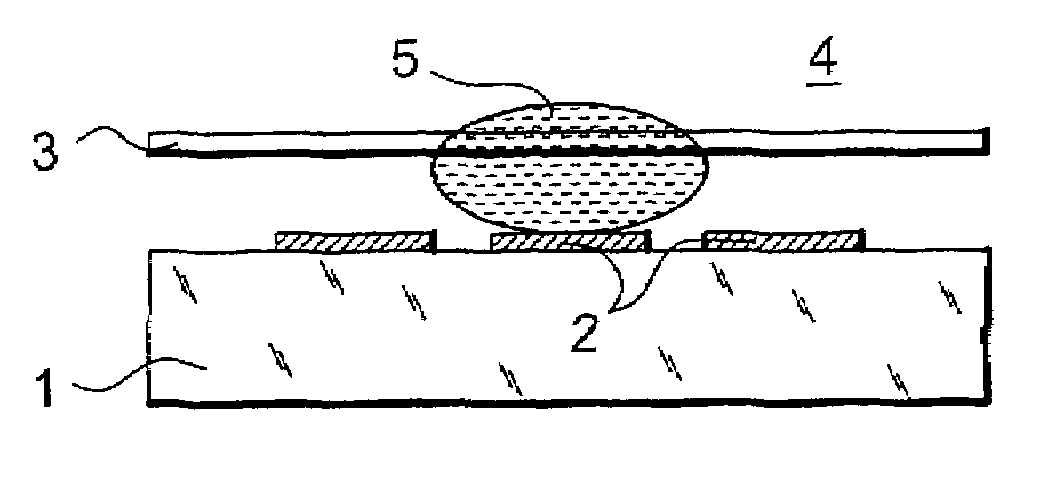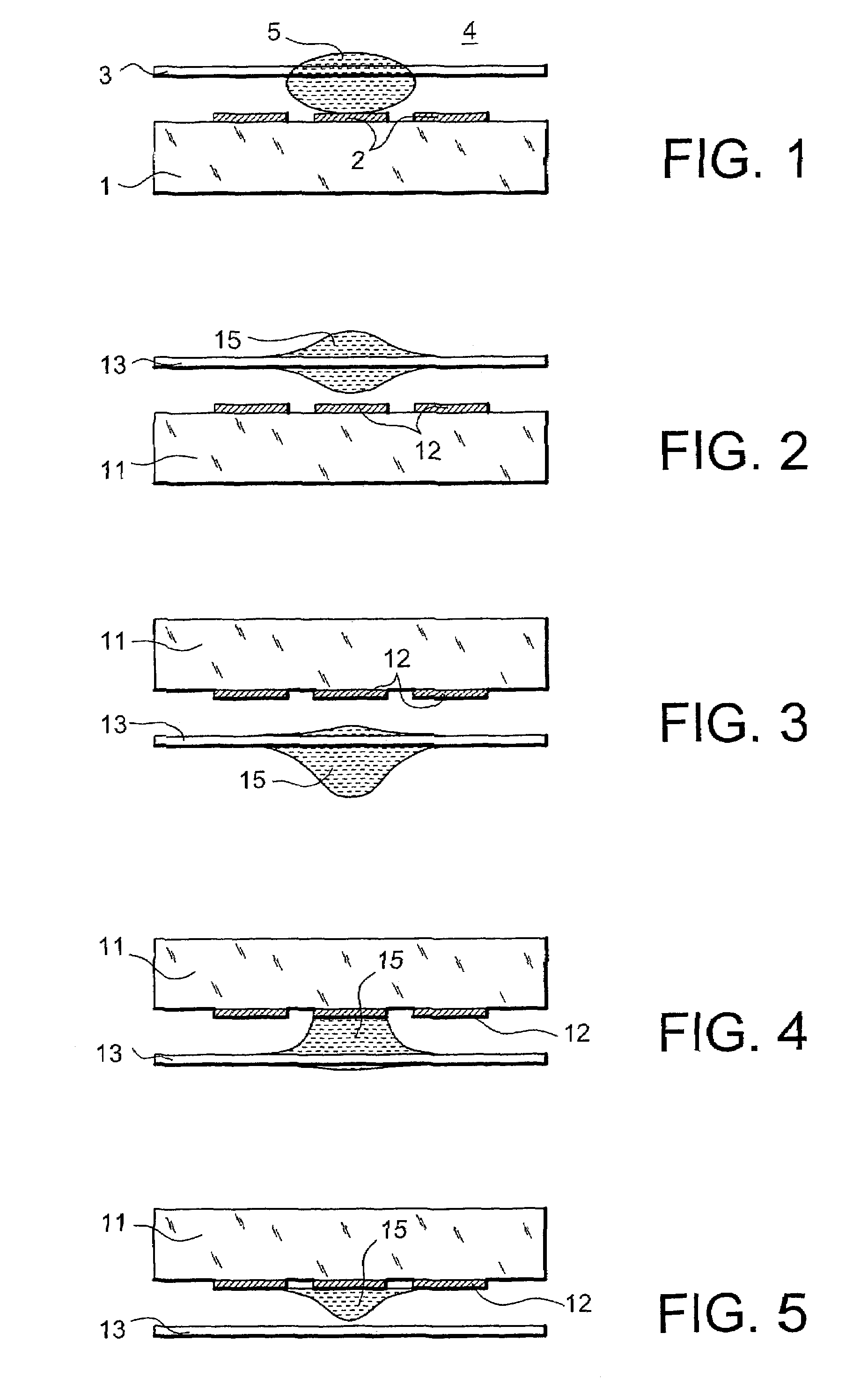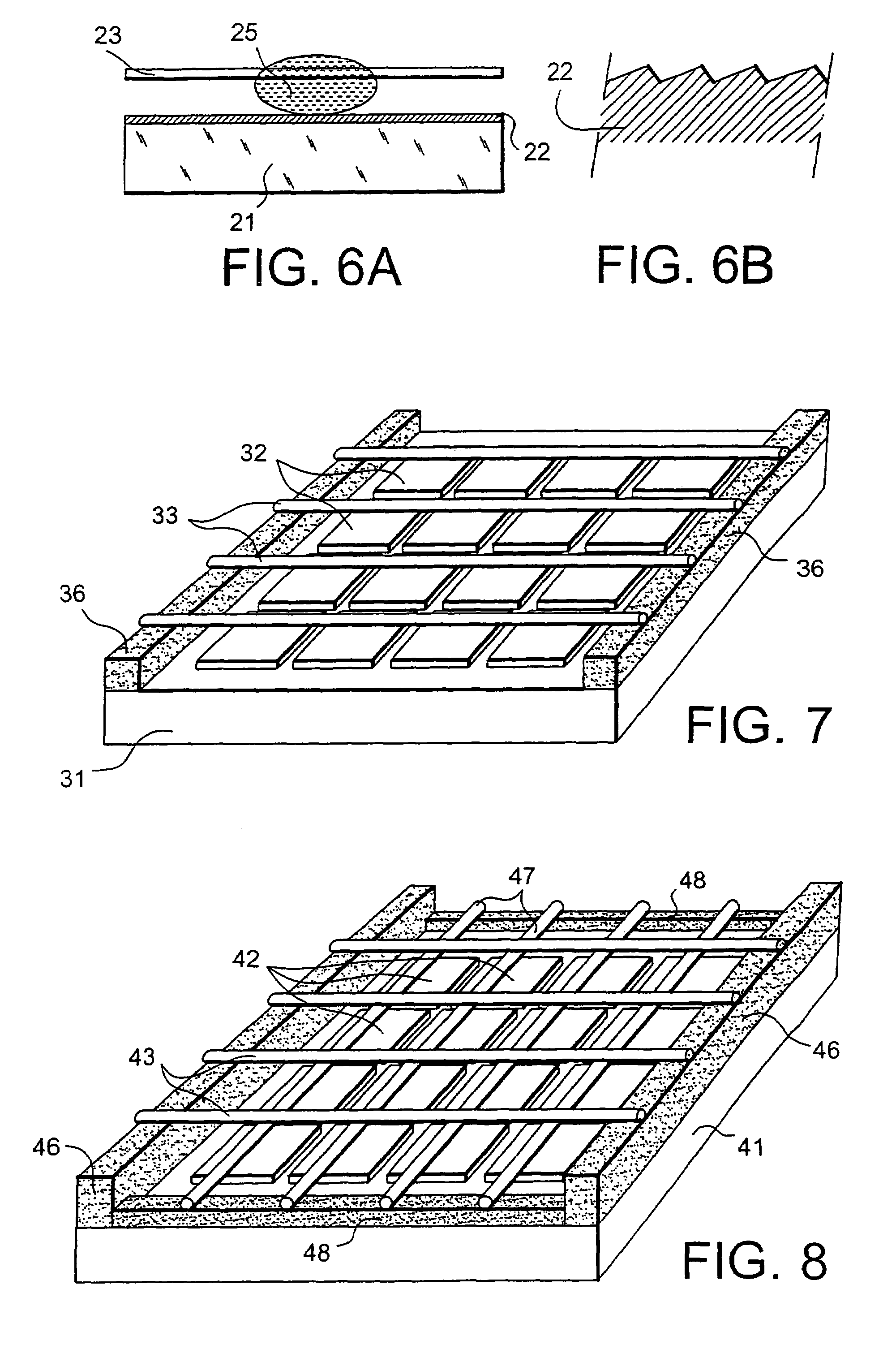Device for displacement of small liquid volumes along a micro-catenary line by electrostatic forces
a micro-catenary and electrostatic force technology, applied in laboratory apparatus, information storage, instruments, etc., can solve the problems of limiting reaction efficiency, introducing a large number of difficulties in the miniaturization section of ducts, and difficult to control the fluid displacement in these micro-ducts
- Summary
- Abstract
- Description
- Claims
- Application Information
AI Technical Summary
Benefits of technology
Problems solved by technology
Method used
Image
Examples
Embodiment Construction
[0057]The first variant of the invention is shown in FIG. 1. The device shown, that may be called a chip, comprises a plane substrate 1, preferably made of an insulating material. One of the faces of the substrate 1 comprises electrodes 2 aligned along the direction specified for the displacement of micro-droplets. A conducting wire 3 or micro-catenary line is arranged approximately parallel to the substrate 1 and at a determined distance from this substrate. The micro-catenary line 3 is facing the electrodes 2. The assembly is immersed in an ambient medium 4 that may be a gas or a liquid that is not miscible with the liquid in the micro-droplet 5.
[0058]The device according to the invention deforms or displaces the droplet 5 by the application of an electric field between the micro-catenary line and at least one of the electrodes 2. The displacement of the droplet can be explained with reference to prior art mentioned above, in relation to electrostatic forces.
[0059]Since the micro-...
PUM
| Property | Measurement | Unit |
|---|---|---|
| voltages | aaaaa | aaaaa |
| diameter | aaaaa | aaaaa |
| diameter | aaaaa | aaaaa |
Abstract
Description
Claims
Application Information
 Login to View More
Login to View More - R&D
- Intellectual Property
- Life Sciences
- Materials
- Tech Scout
- Unparalleled Data Quality
- Higher Quality Content
- 60% Fewer Hallucinations
Browse by: Latest US Patents, China's latest patents, Technical Efficacy Thesaurus, Application Domain, Technology Topic, Popular Technical Reports.
© 2025 PatSnap. All rights reserved.Legal|Privacy policy|Modern Slavery Act Transparency Statement|Sitemap|About US| Contact US: help@patsnap.com



